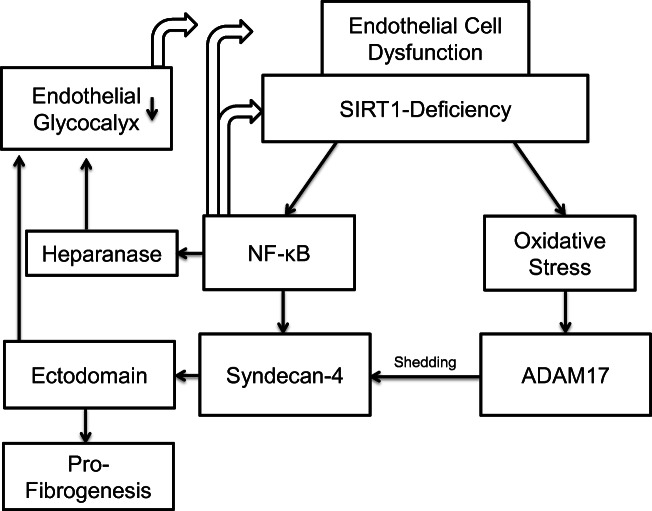Fig. 2.
Endothelial Sirtuin1-deficiency leads to the degradation of the endothelial glycocalyx. Endothelial Sirtuin1-deficiency, a model of global endothelial dysfunction, leads on the one hand to increase NF-κB signaling and on the other hand causes increased oxidative stress. The increased NF-κB signaling induces both the transcription of syndecan-4 and heparanase. In addition to that NF-κB reduces Sirtuin1-activity and therefore sustaining the endothelial cell dysfunction. The increased oxidative stress induces ADAM17-acitivity which results in a greater amount of shedding of syndecan-4. The higher shedding of syndecan-4 and the higher activity of heparanase cause the degradation of the endothelial glycocalyx. Furthermore, the shed ectodomain of syndecan-4 gains systemic effects and potentiates a pro-fibrogenic response

